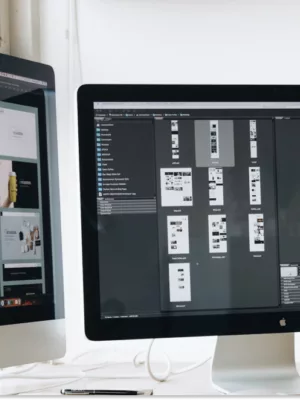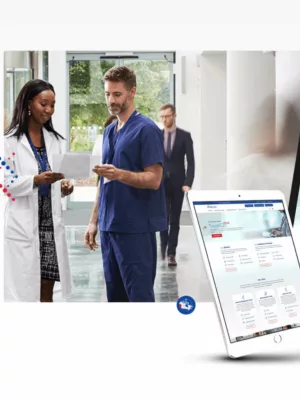
As a leading provider of user experience (UX) design services, we at Convergine know that crafting a smooth, intuitive user journey is essential for driving conversions and delivering a stellar customer experience. In this post, we'll explore key principles and strategies for designing a website that guides users effortlessly from initial engagement to final conversion.
Understanding the User Journey
The user journey on your website, mobile or web application encompasses all the touchpoints and interactions a customer has with your brand, from the first time they discover your product or service to the moment they complete a desired action, such as making a purchase or signing up for a service.
At each stage of this journey, users have specific needs, pain points, and expectations that must be addressed through thoughtful UX design. By deeply understanding your target audience and mapping out their typical paths to conversion, you can identify opportunities to streamline the experience and remove any friction or roadblocks.

Optimizing the Lead Generation Stage
The first and perhaps most critical step in the user journey is capturing a user's initial interest and converting them into a lead. This often starts with your home or landing page, which should immediately communicate your value proposition, showcase your key offerings, and invite visitors to explore further.
Ensure that your calls-to-action (CTAs) are prominent, compelling, impactful and relevant to the user's current mindset. Leverage eye-catching visuals, succinct copywriting, and strategic placement to guide users toward taking the desired next step, whether that's subscribing to your email list, scheduling a consultation, or downloading a free resource.
Nurturing Leads with Personalized Experiences
Once you've generated a lead, it's time to nurture that relationship and guide the user closer to conversion. Leverage user data, browsing behaviour, and content preferences to deliver personalized experiences that address their specific needs, and pain points.
This could involve serving up tailored product recommendations, curating relevant blog content, or automating email sequences that provide value at each stage of the buyer's journey. By anticipating the user's next logical step and making it easy for them to take action, you can steadily move them closer to conversion.
Optimizing the Conversion-Focused Stages
As users move closer to completing a conversion, such as making a purchase or signing up for a service, it's crucial to ensure that the experience is as streamlined and frictionless as possible. Eliminate unnecessary form fields and visual distractions, simplify the checkout process, and provide clear, concise instructions to guide users through each step, while reasonably minimizing the number of steps.
Additionally, consider incorporating elements that build trust and credibility, such as customer reviews, security badges, and transparent pricing information or return/cancellation statements. By addressing any lingering concerns or objections, you can increase the likelihood of a successful conversion.
Continuous Optimization and Refinement
Crafting a seamless user journey is an ongoing process of testing, learning, and refining. Regularly gather user feedback, analyze key performance metrics, and iterate on your design and content strategies to continually improve the experience.
Stay nimble and adaptable, as user behaviors, preferences, and expectations are constantly evolving. By maintaining a user-centric mindset and a commitment to continuous optimization, you can ensure that your website remains a powerful tool for driving engagement, leads, and conversions.
At Convergine, we've helped numerous clients optimize their user journeys and unlock new levels of growth. If you're ready to take your website's performance to new heights, we'd be thrilled to collaborate with you. Contact us today to learn more about our UX design services.












